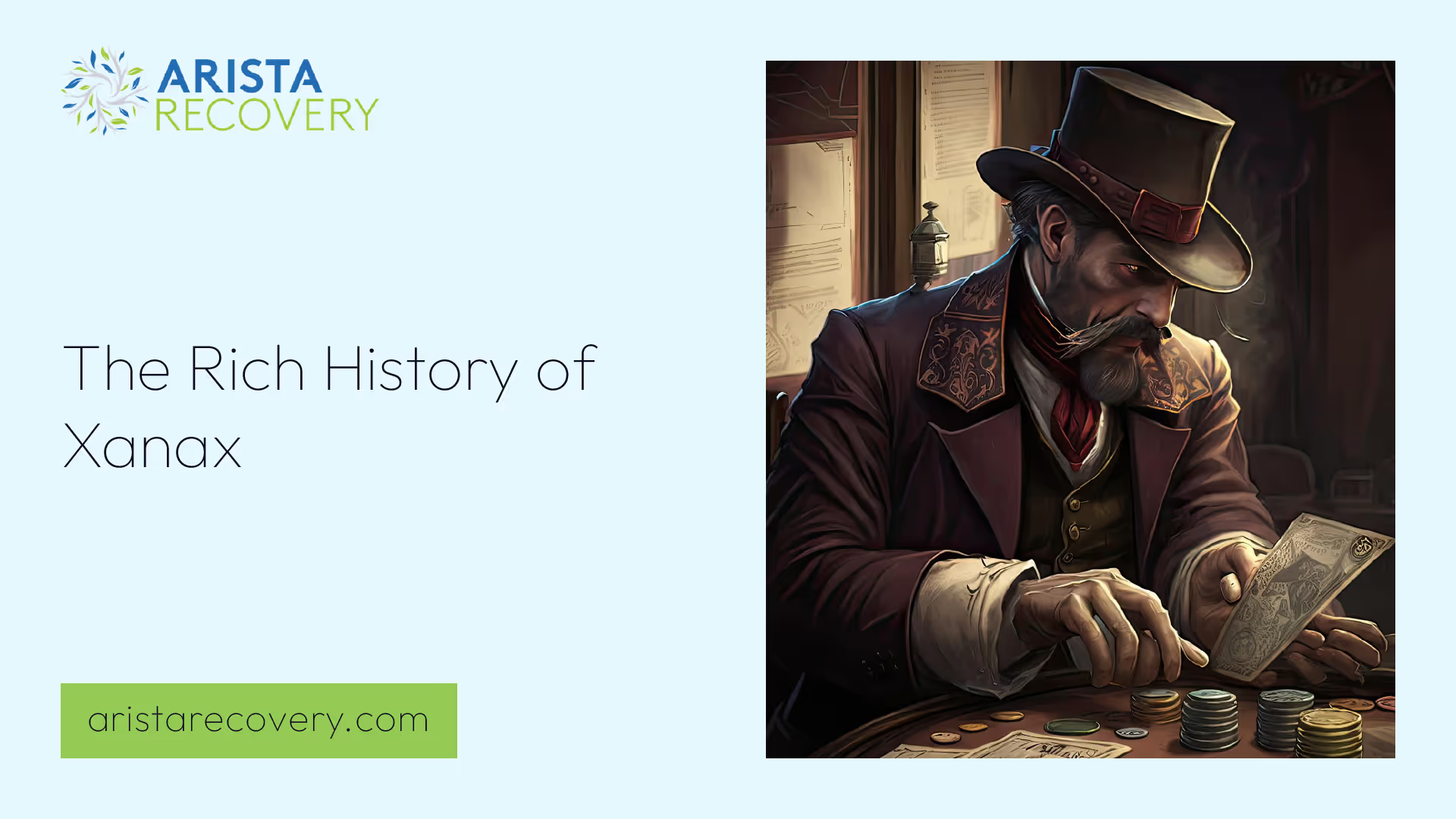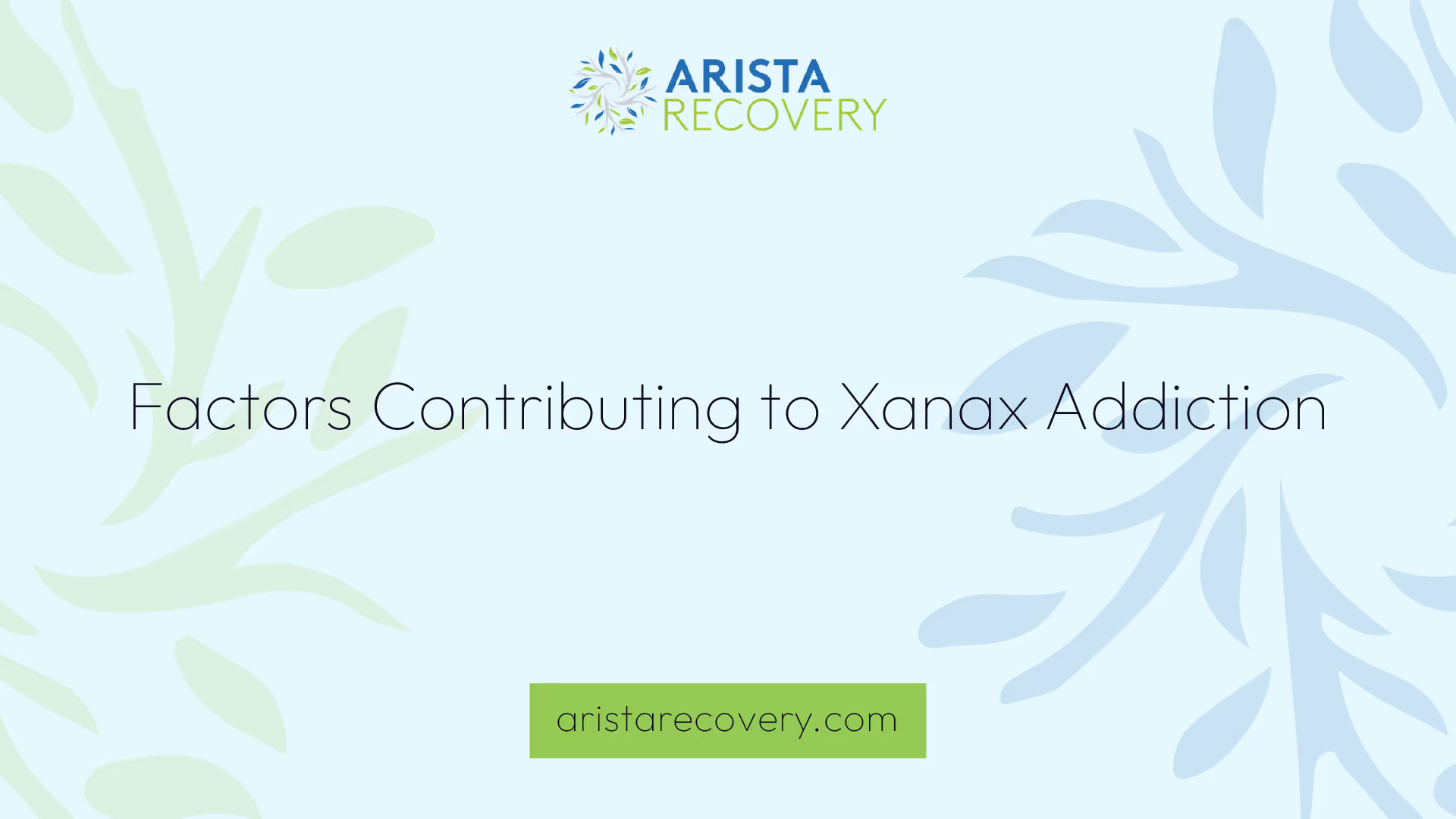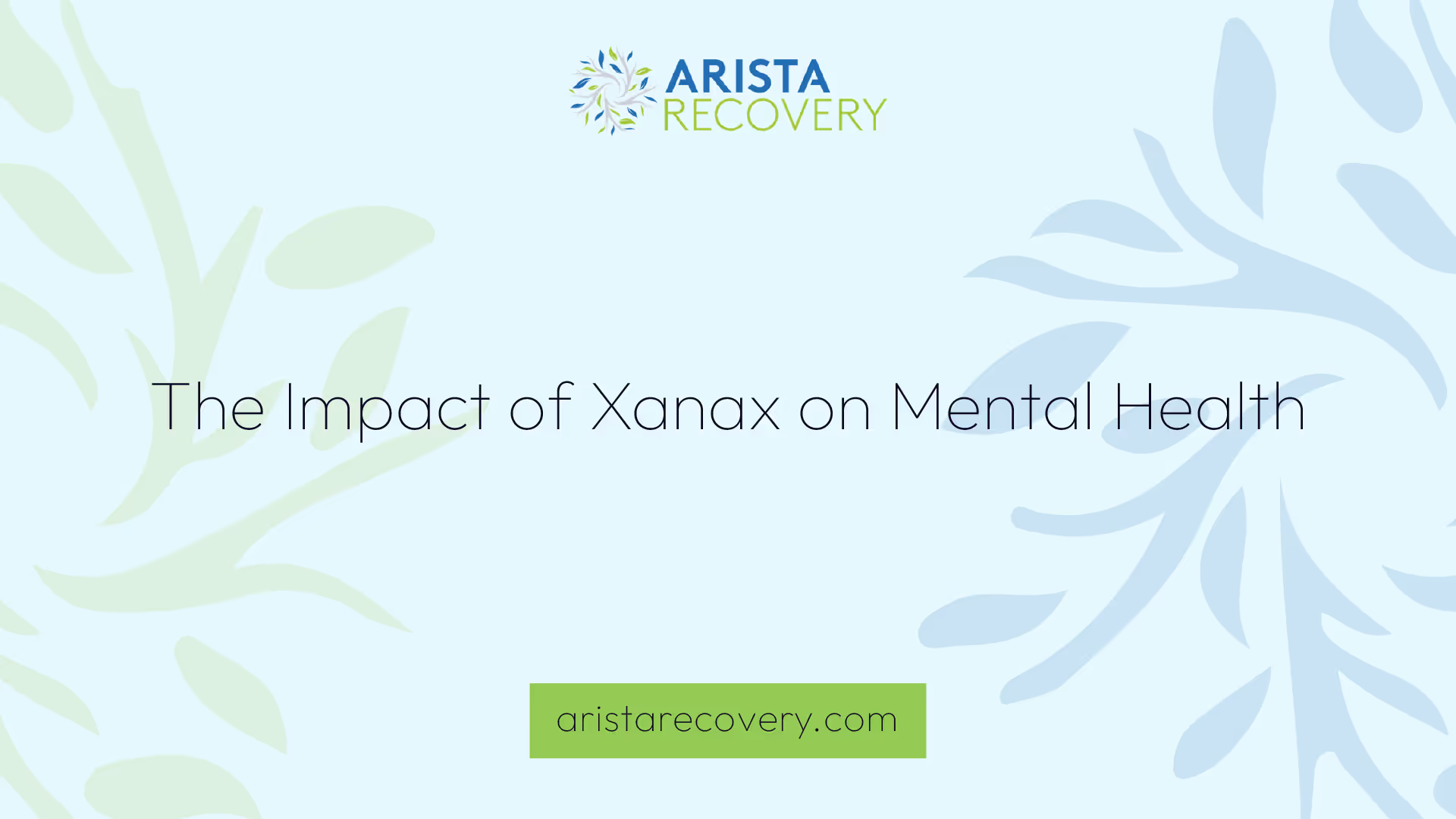The Rich History of Xanax


Understanding Xanax Addiction
To fully comprehend the implications of Xanax addiction, it's essential to understand the drug's history and how it works. This knowledge can provide a broader perspective on why Xanax misuse is a significant concern today.
Xanax: A Brief History
Xanax, also known as alprazolam, originated in the late 1960s, invented by medicinal chemist J.B. Hester. It was first patented in Germany in 1970. The Upjohn Company initially presented Xanax to the FDA as an antidepressant, backing its application with approximately 50 double-blind studies to demonstrate its effectiveness and lower toxicity compared to other drugs available at the time.
The FDA approved Xanax for prescribed use in 1981, but as an anti-anxiety medication rather than an antidepressant. This led to a spike in written prescriptions for Xanax in the 1990s [1]. By the 1990s, Xanax had become one of the leading drugs in psychiatry.
The patent for Alprazolam was granted in 1976 and expired in 1993, which opened the doors for the introduction of generic variants of the drug. Despite the emergence of these generic options, Pfizer, the current holder of the trade name "Xanax," remains a significant player in the market.
Mechanism of Action
Xanax belongs to a class of drugs known as benzodiazepines, which work by enhancing the effect of a neurotransmitter called gamma-aminobutyric acid (GABA) in the brain. GABA inhibits the activity of neurons, reducing nerve excitability and producing a calming effect. This mechanism makes Xanax highly effective in managing conditions like anxiety and panic disorders.
However, the same mechanism that makes Xanax effective also contributes to its potential for misuse and addiction. The calming effect can become addictive, and people may begin to rely on Xanax to cope with stress, anxiety, and other challenges. Over time, this can lead to tolerance, dependence, and ultimately, addiction.
Understanding the history and mechanism of Xanax can aid in grasping the seriousness of Xanax addiction. If you or a loved one is struggling with Xanax misuse, it's crucial to seek help promptly. Check out our resources on how to ease Xanax withdrawal and the side effects of Xanax. Remember, help is available, and recovery is possible.
The Risks of Xanax Misuse
Xanax, officially known as Alprazolam, is widely prescribed for the treatment of anxiety and panic disorders due to its calming effect on the central nervous system. However, misuse of this medication can lead to severe health risks.
Side Effects and Health Risks
Xanax can have side effects similar to alcohol consumption, such as sedation, coordination issues, and increased risk of falls. These side effects can increase in intensity with prolonged misuse. In addition, withdrawal symptoms can include seizures, shortness of breath, and confusion. These withdrawal symptoms can be severe, and it is recommended to seek medical assistance when trying to stop using Xanax. You can find more information about how to ease xanax withdrawal on our website.
Long-term use of Xanax is not recommended due to the risk of dependence. Despite its effectiveness in the relief of moderate to severe anxiety and panic attacks, most evidence shows that the benefits of alprazolam in treating panic disorder last only four to ten weeks [4]. For a more detailed list of side effects, visit our page on four xanax side effects.
Addiction Potential
Alprazolam is associated with misuse and dependence, with high affinity binding, high potency, and rapid onset increasing its abuse potential. The physical dependence and withdrawal syndrome of alprazolam contribute to its addictive nature. In fact, it is one of the most commonly prescribed and misused benzodiazepines in the United States.
In Australia, due to concerns regarding tolerance, dependence, and abuse, it is not recommended for the treatment of panic disorder. Changes in the legal status of Alprazolam globally, including its rescheduling to Schedule 8 in Australia, reflect the increasing awareness and concern about the misuse and addiction potential of this medication.
Understanding the history of Xanax, its side effects, and potential for addiction is crucial for anyone prescribed this medication. It's important to use it responsibly and seek help if misuse or dependence is suspected. Our page on xanax withdrawal symptoms can provide more information on what to expect if you're trying to stop using Xanax.

Factors Contributing to Xanax Addiction
Understanding the factors that contribute to Xanax addiction is essential in addressing the issue and ensuring effective treatment. These factors primarily include misuse and dependence, as well as concerns surrounding overdose.
Misuse and Dependence
Xanax, or Alprazolam, is used to treat anxiety and panic disorders. It falls under the class of medications called benzodiazepines, which act on the central nervous system to produce a calming effect by enhancing the effects of a natural chemical in the body (GABA). While effective in the relief of moderate to severe anxiety and panic attacks, Alprazolam is associated with misuse and dependence, with high affinity binding, high potency, and rapid onset increasing its abuse potential.
The physical dependence and withdrawal syndrome of Alprazolam contribute to its addictive nature. It is one of the most commonly prescribed and misused benzodiazepines in the United States. Long-term use of Xanax is not recommended due to the risk of dependence. Withdrawal symptoms of Xanax can include seizures, shortness of breath, and confusion. For more information on how to manage these symptoms, you can visit our article on how to ease Xanax withdrawal.
Overdose Concerns
The misuse of Xanax not only leads to dependence but also raises concerns about the risk of overdose. Xanax can have side effects similar to alcohol consumption, such as sedation, coordination issues, and increased risk of falls. Overdose can occur when the drug is taken in higher than prescribed doses, or when it is used in combination with other substances like alcohol.
As Xanax is one of the most prescribed drugs in the United States, it is widely available, which further increases the risk of misuse and overdose [6]. It is important to use Xanax only as directed by a healthcare professional, and to be aware of the four Xanax side effects that can occur.
Understanding these factors and the history of Xanax can aid in the prevention of Xanax misuse and addiction. It can also guide individuals towards seeking the right help and treatment options.
Seeking Help for Xanax Addiction
When it comes to overcoming Xanax addiction, understanding the available treatment options and the journey to recovery is essential.
Treatment Options
Xanax misuse can lead to addiction, particularly if there's a history of substance use disorder [3]. If misused for an extended period, the medication may not work as effectively, and patients should consult their doctor if this occurs. It's essential to take the medication exactly as prescribed to lower the risk of addiction.
Treatment options for Xanax addiction primarily consist of medically supervised detoxification, counseling, and medication-assisted treatment (MAT). Detoxification involves eliminating Xanax from the system in a safe and controlled environment. This process should ideally be pursued under medical supervision due to potential withdrawal symptoms that might arise. For more information, visit our article on how to ease xanax withdrawal.
Counseling plays a crucial role in helping individuals understand their addiction and develop coping strategies to handle triggers and cravings. This could involve cognitive-behavioral therapy, group therapy, or individual counseling sessions.
Medication-Assisted Treatment (MAT) involves using medications, in combination with counseling and behavioral therapies, to provide a holistic approach to the treatment of substance use disorders. This approach can help manage withdrawal symptoms, reduce cravings, and restore balance to brain circuits affected by addiction.
Recovery Journey
The journey to recovery from Xanax addiction is often long and challenging. It requires commitment, dedication, and a willingness to make significant lifestyle changes. However, with the right support and treatment, overcoming Xanax addiction is entirely possible.
The first step in the recovery journey is acknowledging the problem and seeking help. This could involve confiding in a trusted friend or family member, contacting a healthcare professional, or reaching out to a local support group.
Following detoxification and treatment, the next step is maintaining sobriety. This involves ongoing counseling, participation in support groups, and implementing lifestyle changes to avoid triggers and cope with cravings. Regular exercise, a healthy diet, and good sleep hygiene can all contribute to a healthier lifestyle and support long-term recovery.
Remember, recovery is a personal journey that looks different for everyone. There will be challenges and setbacks, but each step forward, no matter how small, is a step towards a healthier and happier life. For more insights on this journey, check out our article on xanax withdrawal symptoms.
Overcoming Xanax addiction is a significant challenge, but with the right support and resources, it's entirely possible. If you or someone you know is struggling with Xanax misuse, don't hesitate to seek help. The road to recovery starts with a single step.

The Impact of Xanax on Mental Health
Xanax, also known as alprazolam, is a medication that falls under the class of benzodiazepines, which act on the central nervous system to produce a calming effect by enhancing the effects of a natural chemical in the body (GABA). While its calming effects can help manage anxiety and panic disorders, it is crucial to understand the potential psychological effects and the implications of long-term use.
Managing Anxiety and Panic Disorders
Xanax is often prescribed to treat anxiety disorders, panic disorder, and other conditions. It works by increasing the effects of gamma-aminobutyric acid (GABA), a calming neurotransmitter in the brain. This helps individuals experiencing excessive anxiety return to a balanced anxiety level [5]. It's worth noting that Xanax acts as a symptom reliever rather than a cure for anxiety or panic disorders.
One feature of Xanax that makes it a popular choice for managing these conditions is its fast-acting nature. It can be prescribed for temporary distressing events like public speaking or job interviews. Xanax helps in slowing down the central nervous system, leading to a depressant effect. By enhancing the effects of GABA, a neurotransmitter that induces feelings of calmness and relaxation, Xanax reduces excitement and anxiety, promoting a sense of tranquility and relaxation.
Psychological Effects
While Xanax can be effective in managing anxiety and panic disorders, it also has psychological effects that can be detrimental when the drug is misused. Xanax works by binding to gamma-aminobutyric acid A (GABAA) receptors in the brain, reducing overall brain activity, which helps in decreasing feelings of anxiety and panic. However, Xanax can also produce euphoria when taken in larger doses, leading to potential abuse.
Long-term use or misuse of Xanax can lead to dependence and addiction. Withdrawal from Xanax can be challenging, with symptoms ranging from increased anxiety to severe physical effects. If you or someone you know is struggling with Xanax addiction, it's crucial to seek help. Visit our article on how to ease xanax withdrawal for more information.
Understanding the history and effects of Xanax is essential for managing its use and mitigating potential risks. Careful usage, under the guidance of a healthcare professional, can help individuals benefit from the drug's anxiety-reducing effects while avoiding potential dependence or addiction.
Addressing Xanax Misuse in Kansas
As we navigate through the history of Xanax, it's crucial to address the growing concern of Xanax misuse, particularly in specific regions like Kansas. This section will shed light on the current statistics and trends and provide information about support resources available for individuals struggling with Xanax addiction.
Statistics and Trends
Xanax, also known as alprazolam, is a sedative that belongs to the benzodiazepine family of drugs. It's widely prescribed in the United States to treat conditions like anxiety disorders, panic disorders, and anxiety induced by depression. However, misuse of this drug is becoming an alarming issue, with Xanax ranking as the eighth most prescribed drug in the United States [6].
Despite its therapeutic benefits, Xanax can be highly addictive, both physically and psychologically. Its sedative effects start 15 minutes after consumption and can last for between 10 and 20 hours. When taken with alcohol, the impact is multiplied, and one of the side effects is memory loss.
While concrete statistics for Xanax misuse in Kansas are not readily available, it's important to highlight the wider trend of Xanax misuse incidents reported across the country. For example, several cases of illness among teenagers due to Xanax misuse have been reported, highlighting the need for increased awareness and prevention measures [6].
Support Resources
For individuals living in Kansas and struggling with Xanax addiction, there are several support resources available. These resources provide assistance in various forms, including medical treatment, counseling, and peer support groups. It's crucial for anyone dealing with addiction to know that help is available and recovery is possible.
For those seeking medical treatment, withdrawal from Xanax should be done under the supervision of a healthcare professional. Our article on how to ease xanax withdrawal provides useful information on managing withdrawal symptoms.
In addition to medical support, counseling and therapy can be highly beneficial. These services can help individuals understand the root causes of their addiction, develop coping mechanisms, and build a support network to aid in their recovery journey.
Support groups offer a space for individuals to share their experiences and learn from others who are dealing with similar struggles. These groups can be particularly helpful for those in the recovery process, providing a sense of community and understanding that can be crucial during challenging times.
To learn more about the potential side effects of Xanax, refer to our article on four xanax side effects.
Addressing Xanax misuse requires a comprehensive approach, including awareness, prevention, and treatment. By utilizing available resources and support, individuals struggling with Xanax addiction can embark on their recovery journey and work towards a healthier future.
References
[1]: https://www.banyantreatmentcenter.com/2021/12/30/the-history-of-xanax/
[2]: https://www.northstarbehavioralhealthmn.com/resources/the-history-of-xanax
[3]: https://www.webmd.com/drugs/2/drug-9824/xanax-oral/details
[4]: https://en.wikipedia.org/wiki/Alprazolam
[5]: https://www.forbes.com/health/mind/xanax-purpose-dosage-side-effects/
[6]: https://www.theyworkforyou.com/debates/?id=2018-01-15b.696.13&s=drugs
[7]: https://drugabuse.com/benzodiazepines/xanax/history-statistics/
You’re not alone in this.
When mental health challenges and addiction intersect, it can feel isolating. At Arista, we offer compassionate, evidence-based, and trauma-informed care to help you heal, grow, and move forward.
You’re not alone in this.
When mental health challenges and addiction intersect, it can feel isolating. At Arista, we offer compassionate, evidence-based, and trauma-informed care to help you heal, grow, and move forward.
Support that moves with you.
You’ve taken a brave first step. At Arista Recovery, we’re here to help you continue with best-in-class care designed for long-term healing and support.
.webp)






